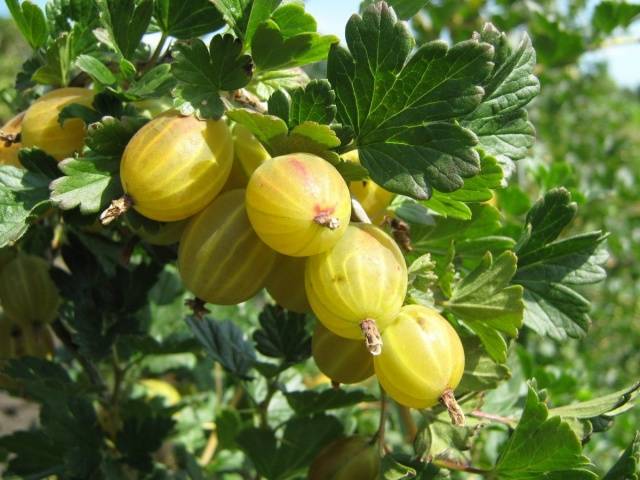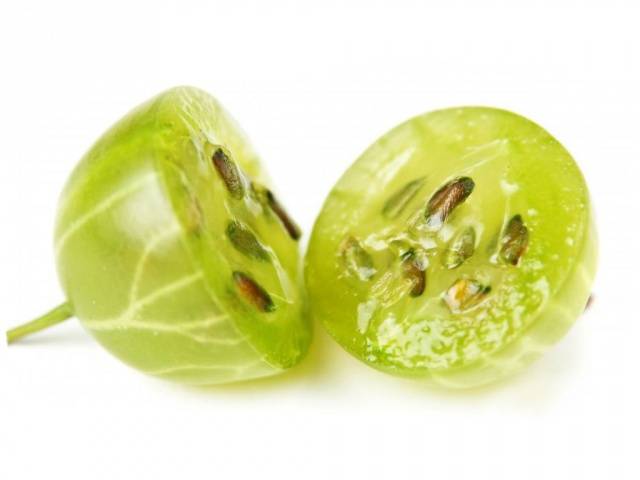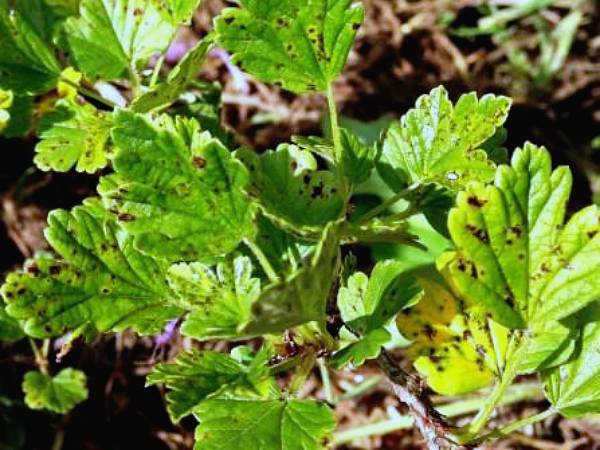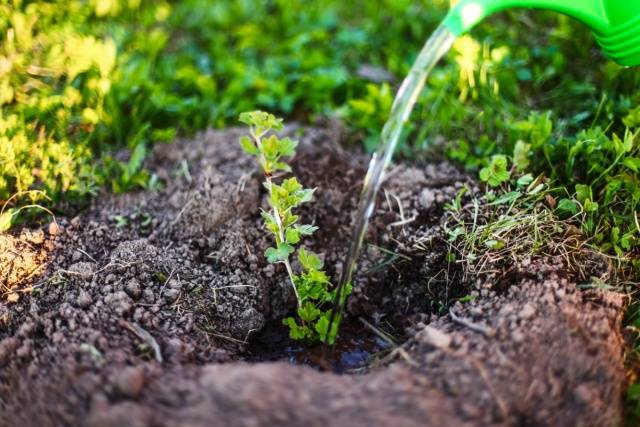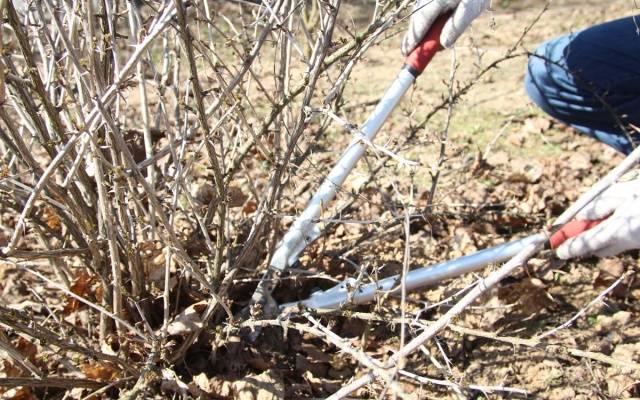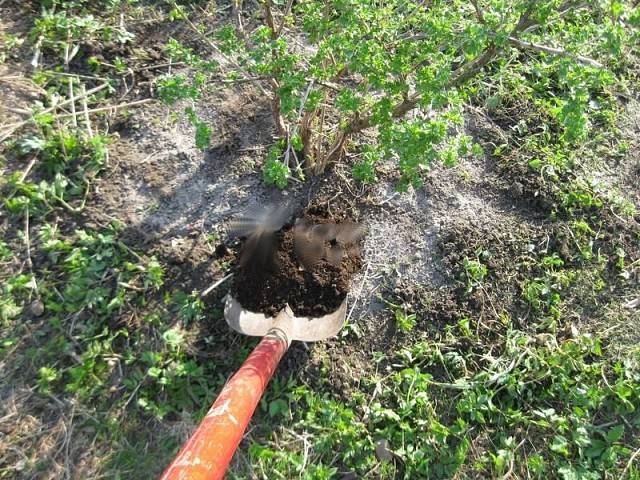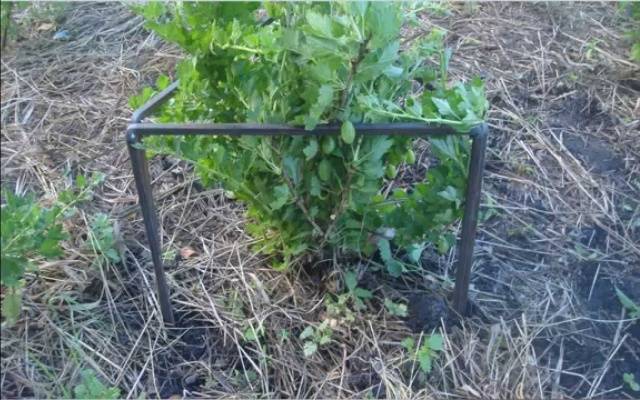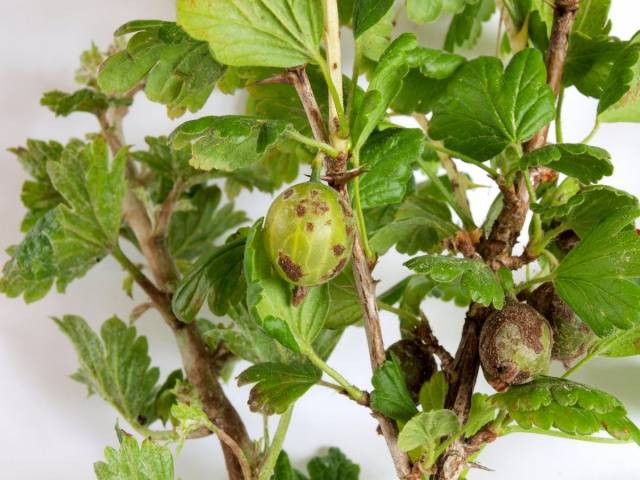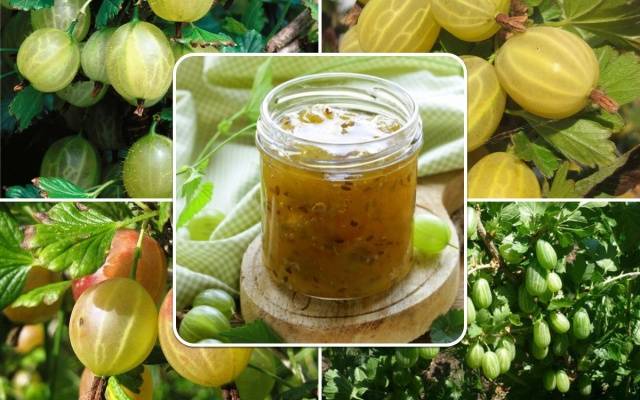Content
Gooseberries of the Beryl variety belong to the well-known and modern varieties, which are distinguished by rare "thorns" and resistance to powdery mildew; it is also characterized by a rich, stable harvest.
Breeding history of the variety
Beryl variety was created on the territory of our country in the 70s of the last century. It was obtained by crossing Malachite and Nugget varieties. It owes its appearance to the doctor of agricultural sciences V.S.Ilyin. The scientist continues the work of A.P. Gubenko, a breeder who received new varieties and gooseberry varieties... The result was extraordinary: the created variety surpassed the parental forms in its performance in many respects.
Description of the bush and berries
Beryl gooseberries are characterized by medium height and medium spreading, dense crown and a small number of thorns, which are located singly in the lower part of the shoot. Usually they "look" down, less often they move away from the branches at an angle of 90 degrees.
The leaves of the Beryl variety are large, five-lobed, pale green in color, the edges of which are framed with elongated teeth. Leaves are not pubescent, with a shiny leaf blade.
The gooseberry shoots are curved and hang down. The flowers of this variety have a goblet shape, they form a two-color inflorescence. The emerging fruits are light green in color, with a smooth surface and a thin, transparent skin.
Dessert gooseberries have a sweet taste with sourness and a high tasting rating. They are large in size - up to 9 g (larger than cherries). This is the maximum size, and the average size is 4 g. The berries are sweet due to the content of monosaccharides in their composition, and ascorbic acid and a number of other organic acids give them sourness. In the process of ripening on gooseberry bushes, they become sweeter and acquire an amber-green hue.
General characteristics of the gooseberry beryl variety are presented in the video:
Advantages and disadvantages
The Beryl variety has many positive qualities, but there are also minor disadvantages, which are shown in the table.
pros | Minuses |
frost resistance: withstands temperatures up to -38 ° C | poor resistance to septoria |
powdery mildew resistance | |
peculiar, special taste of berries, their large size | |
high yield | |
self-fertility (no need for pollinators) | |
few thorns | |
good transportability |
Characteristics
Beryl gooseberries are characterized by a number of indicators that speak of its main qualities and make it possible to select a variety for growing in a summer cottage.
Yield
An adult gooseberry bush has a high yield: it produces 3-10 kg of berries per season. Moreover, the collection can begin as early as mid-July, since Beryl belongs to varieties with an average ripening period. Bears fruit stably in different weather conditions. Productivity directly depends on the care and age of the gooseberry.
Drought resistance and winter hardiness
The gooseberry of this variety is winter-hardy, withstands low temperatures, therefore, does not require shelter for the winter. Beryl is suitable for the regions of the Urals and Western Siberia.Drought-resistant, can survive short dry periods, but does not tolerate excess moisture.
Ripening period
The berries are large and have a high tasting rating due to their excellent taste.
Disease and pest resistance
Gooseberries are resistant to pests and diseases, but are easily affected by septoria, a fungal disease in which gray or rusty spots with a yellow border form on the leaves.
With a strong defeat, the shoots dry up, leaves fall from the bush.
Transportability
Despite their thin skin, the berries tolerate transportation well, which makes them easier to sell in different regions. Stored for several days.
Growing conditions
Beryl does not create special growing conditions for gooseberries. It can be planted on clay and loamy, sandy and sandy loam soil. On acidic, swampy, cold soils, it will not grow. On loams with a high humus content, this variety has the best fruiting.
An open, well-lit place is suitable for planting. When thickening the gooseberry bush, thinning is important so that each shoot has access to sunlight and air.
He does not need special methods of care and only in case of illness does he require a more attentive attitude to himself.
Landing features
Gooseberries are planted in the spring, and more often in the autumn 3-4 weeks before the start of frost to adapt the root system. Choose an open and lighted area on an elevation where there are no northerly winds. Inadmissibly close location of groundwater.
Before planting, the soil is prepared for the gooseberry, for which it is necessary:
- reduce acidity at high pH values by adding lime or dolomite flour;
- clear from weeds and dig up;
- lighten heavy soil by introducing humus (compost), peat, sand;
- add 1 m2 a bucket of humus, 30 g of superphosphate, 20 g of potassium phosphate and a glass of wood ash.
Sometimes the nutrient composition is added directly during planting. A hole is dug 50 × 50, fertile soil is poured onto the bottom with a slide, the root system of a bush of this variety is carefully placed on top and sprinkled with earth, periodically trampling it so that there are no voids in the ground. The root collar does not deepen and is located above ground level.
For planting, select 2-year-old beryl gooseberry seedlings with a formed root system and lignified roots up to 25 cm. The seedling should ideally have 3-4 strong shoots. Before planting, the leaves are cut off from them and the shoots are shortened. The planted plant is watered abundantly, a tree-trunk circle is created and the soil surface is mulched.
Care rules
Despite the ease of care, the Beryl variety requires compliance with a number of agrotechnical measures.
Pruning bushes
Without pruning, Beryl is actively developing shoots, and after 2-3 years the gooseberry bush will be strongly thickened. At the same time, due to lack of nutrition, young shoots develop poorly. In the spring, before the end of the dormant period, it is important to cut out old, twisted, diseased branches completely. The shoots of the current year are shortened by a third, and 4 of the strongest ones are selected and left from the basal ones. By the peak of fruiting (5-7 years), the bush should be formed by 18-20 branches of different ages.
Loosening
Gooseberry Beryl is spud and loosened up to 5 times per season. This technique brings air to the roots and gets rid of weeds. After it, the soil in the trunk circle must be mulched.
Top dressing
A necessary procedure, since the Beryl variety bears fruit well only on fertilized soil.Therefore, even when planting in a soil rich in useful components, after a few years the soil will be depleted, and the yield will fall.
Top dressing of gooseberries is carried out sequentially:
- in spring, the soil around the bush is mulched with a nutritious substrate;
- until June, fertilizing with nitrogen is needed so that the bush actively grows;
- gooseberry Beryl is fed with organic matter: mullein or chicken droppings;
- after the end of flowering, the gooseberry "in the diet" should introduce potassium and phosphorus, which is introduced in the form of superphosphate and potassium phosphate, infusion of wood ash (2 dressings are enough before the fruits ripen);
- before the onset of frost, the bush is fed with 30 g of superphosphate and 20 g of potassium and magnesium phosphate, which is important for survival in the winter and subsequent fruiting.
Watering
Moisture is necessary for gooseberries, but the Beryl variety does not tolerate its excess. Excessive watering does not benefit the plant. In the spring, the growth of the bush begins due to melt water. And in dry periods, additional watering is necessary. Water is needed during periods of flowering and fruit setting of Beryl. The last time the gooseberries are watered is when 2 weeks are left before picking the berries. Watering is done at the root, it is undesirable to wet the leaves.
Reproduction
Since the gooseberry Beryl belongs to shrubs, then it reproduces in the traditional ways for them: cuttings, grafting, dividing the bush. Each gardener chooses the most practical method for a particular situation.
Support
Support is necessary not only for the formation of a compact bush, but also prevents branches and stems from lodging. With good support, the branches will not break during strong winds or snowfalls. The support makes it easier to care for gooseberries: mulching, watering, loosening becomes easier.
Preparing for winter
Old leaves and branches need to be collected and burned, digging up the soil so that wintering pests die. During digging, you need to add phosphorus and potassium fertilizers and water the gooseberries abundantly. It is important to remove old shoots that have reached 5 years of age.
Pest and disease control
Most often, the Beryl gooseberry variety affects septoria. The disease is caused by a fungus that develops on the leaves in the form of spots. Then they merge and the leaf falls off. Dark blotches form on the spots - these are fungal spores, which, falling on the berries, infect them. The disease is actively developing and "attacks" the variety in wet weather, thickened plantings of gooseberries also contribute to its development. Septoria is strongly reflected in the subsequent harvest.
Control measures:
- harvesting and burning of fallen gooseberry leaves;
- digging up the soil;
- thinning of thickened branches;
- fertilization, which increases disease resistance;
- treatment with antifungal drugs.
Of the pests, the gooseberry bush Beryl is most often visited by aphids, moths, sawflies. With timely detection, it is enough to process the bushes with ash and soap solutions or Bordeaux liquid.
Conclusion
Thanks to a number of advantages, gooseberry Beryl has found many admirers-gardeners who grow it in their garden plots and enjoy the abundant harvest and aromatic jam obtained from the berries.
